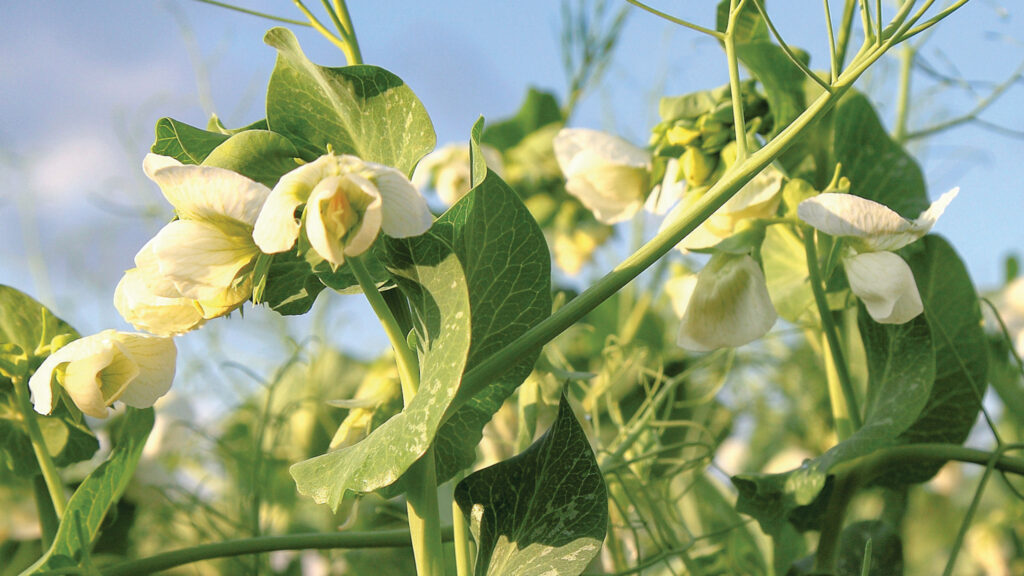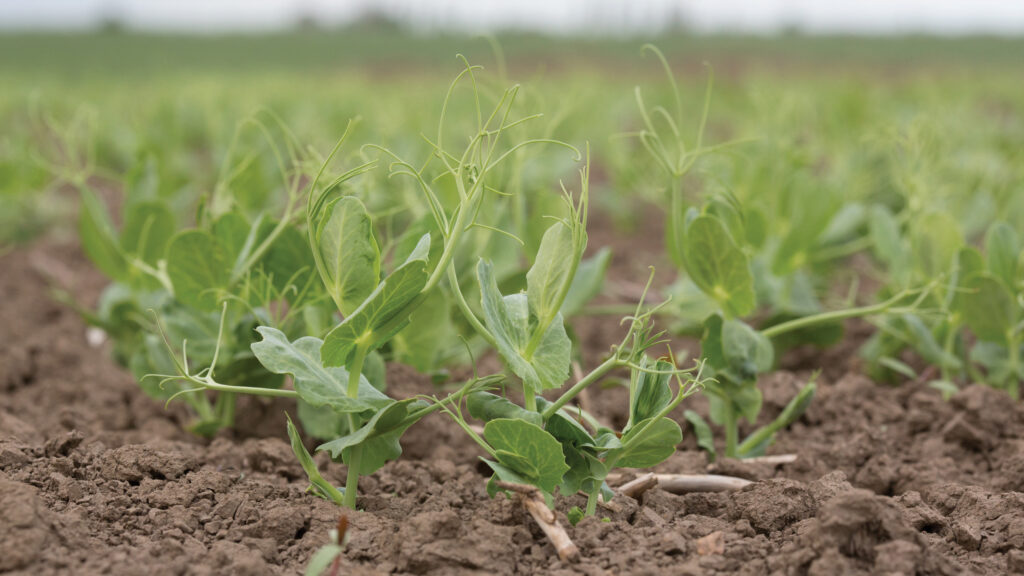5 key factors for maximising pea yields
 © Blackthorn Arable
© Blackthorn Arable A multi-noded, tall-stemmed plant with deep roots is the key to farmers raising pea yields, according to a new pea growth guide.
Researchers estimate that peas could yield 7-8t/ha on light soils and 9-10t/ha on water retentive soils. However, typical on-farm yields are substantially lower.
To help farmers bridge this yield gap, Adas, BASF, and the Processors and Growers Research Organisation (PGRO) have collaborated to bring together the latest information in the Pea Growth Guide.
See also: Aphid-borne pea virus can ‘cut yields by 40%’
It includes new findings from the Pea Yield Enhancement Network (YEN), where Adas analysis of the 104 crops entered between 2017 and 2023 revealed the plant characteristics needed to achieve high yields and quality.
The analysis also identified the key limiting factors, as well as the impact of sowing dates and heat stress at flowering.
Adas research consultant Dr Thomas Wilkinson explains the detailed analysis of crop physiology and development, and its effects on yield, means there is some very useful information, even for seasoned growers.
According to the guide, YEN analysis has identified several key husbandry and environmental factors for pea yields.
1. Establishment
YEN data show that earlier sowing and earlier plant establishment are associated with higher yields.
Growers are advised to use a variety with high vigour, and to drill at an even sowing depth into good soil conditions that ensure good seed-to-soil contact.

© Tim Scrivener
2. Maximise pre-flowering growth
Tall plants with high biomass are associated with higher yields. This may be caused by the plants having more nodes for branches and flowers, as well as more nitrogen reserves.
Nitrogen reserves are important because nitrogen uptake and fixation rates decrease during pod fill in peas as nitrogen is relocated from the canopy to the seed.
Crops with a high yield potential, therefore, need to accumulate nitrogen reserves and may benefit from growing a larger canopy to help meet the nitrogen demand of the seed.
This can be achieved by:
- Achieving full ground cover as early as possible through rapid plant establishment.
- Providing sufficient nutrients, especially phosphorus and sulphur, to allow the canopy to expand and fix nitrogen.
Other husbandry factors associated with high yield in YEN
- Regular manuring within the rotation
- Ploughing or deep non-inversion tillage
3. Maximise water capture
Water stress can reduce pod set, seeds per pod and seed filling. Encouraging deep rooting to at least 1m depth is key for good water capture.
This can be aided by minimising any soil compaction, achieving good seed-beds and good soil structure throughout the soil profile.
4. Heat stress at flowering
High temperatures during flowering have been associated with lower yields in the YEN data. This is likely to be caused by reduced self-pollination and greater flower abortion.
Having multi-noded stems with more pods will prolong the period of flowering, helping to compensate for adverse conditions.
5. Maximise green canopy duration
Maintaining a green and healthy canopy for as long as possible is key to maximising the capture of sunlight to fill the seeds.
- Make use of disease resistant varieties and effective fungicides to prevent early canopy death.
- Make use of fungicides with physiological greening effects to prolong canopy life.
Ideal traits for a high-yielding pea crop
The Pea YEN has highlighted the specific plant characteristics needed to achieve high yields.
From this, a high yielding “ideotype” has been developed for peas. Adas explains that an ideotype is a combination of morphological and/or physiological traits that can be targeted to enhance crop yields.
Characteristics may be influenced by genetics, environment and management conditions.
Data analysis shows that high yields in both marrowfats and other combining pea types relate positively to:
- Early plant establishment and earlier flowering
- Greater plant height, shoot biomass and pods per shoot
- More seeds per square metre and, to a lesser extent, heavier seeds
- Greater harvest index – the ratio of seed to total biomass.
Therefore, multi-noded, tall stemmed plants with deep roots are likely to prolong the flowering and pod-setting periods, improving resilience against conditions that may reduce pod set.

